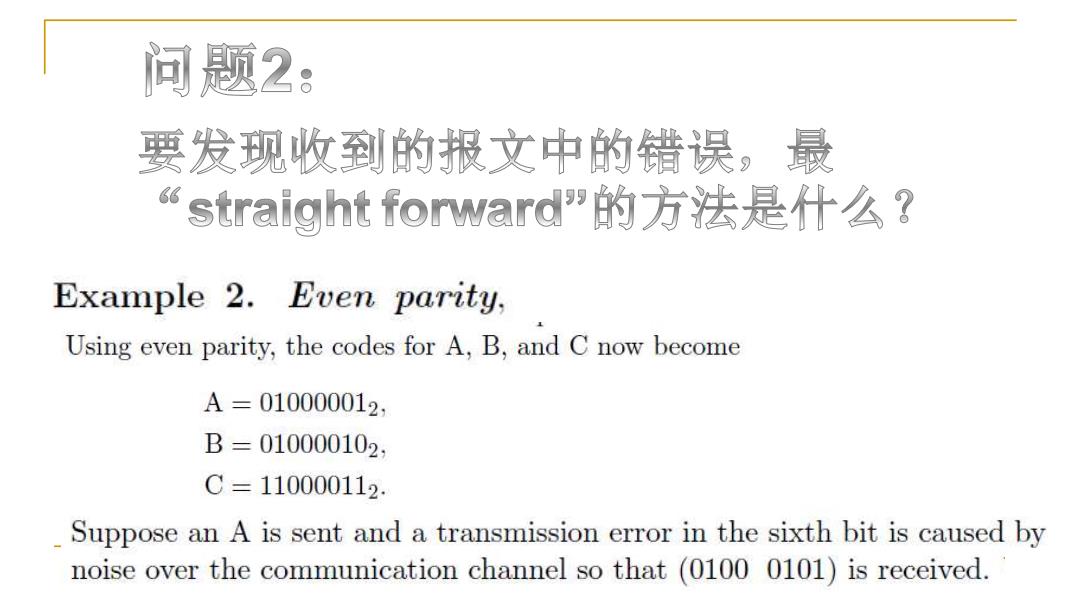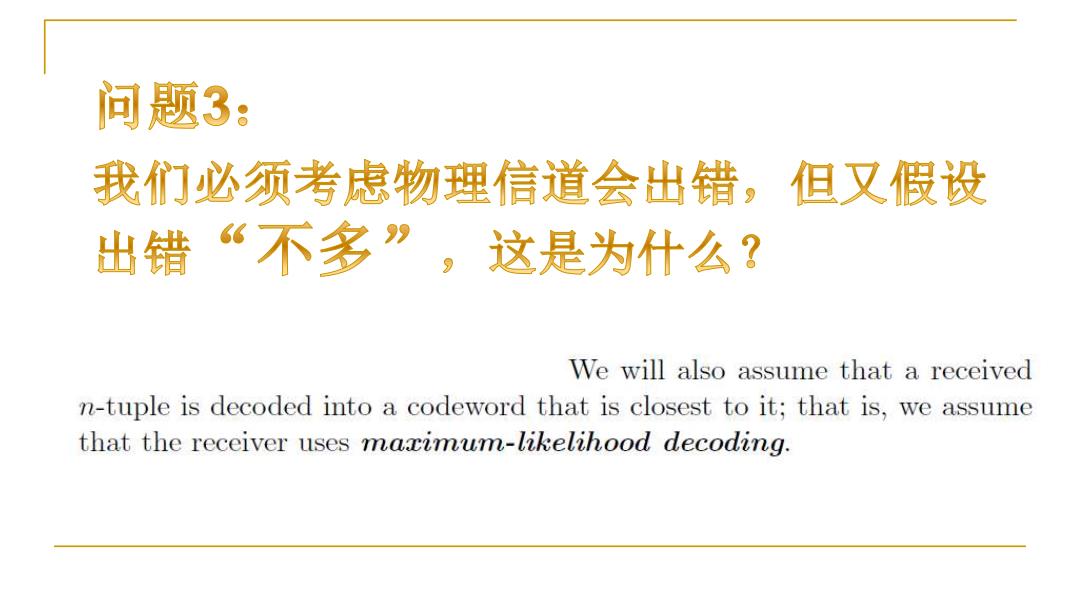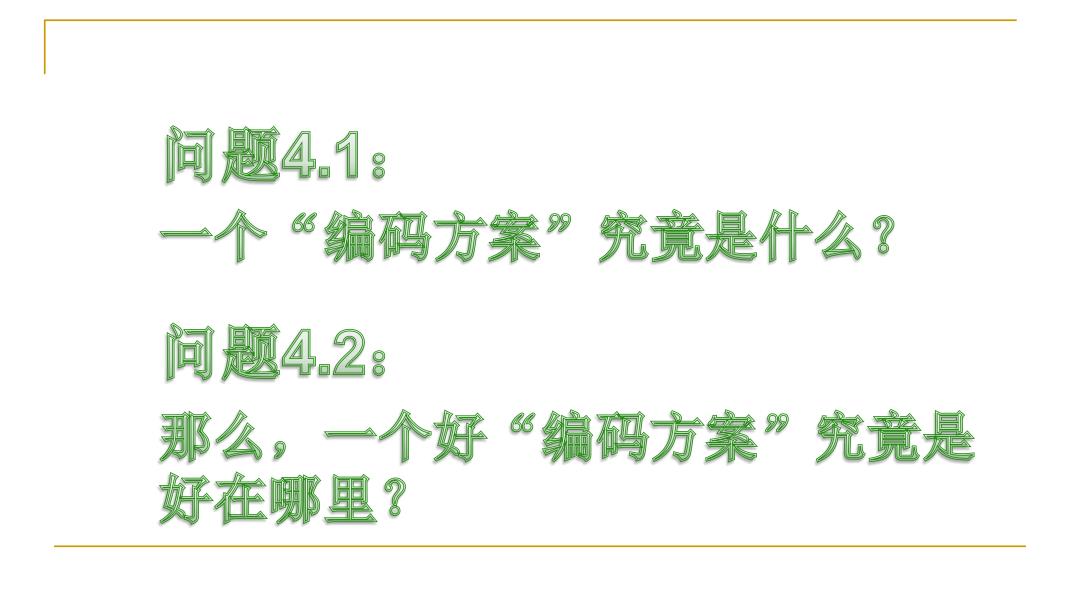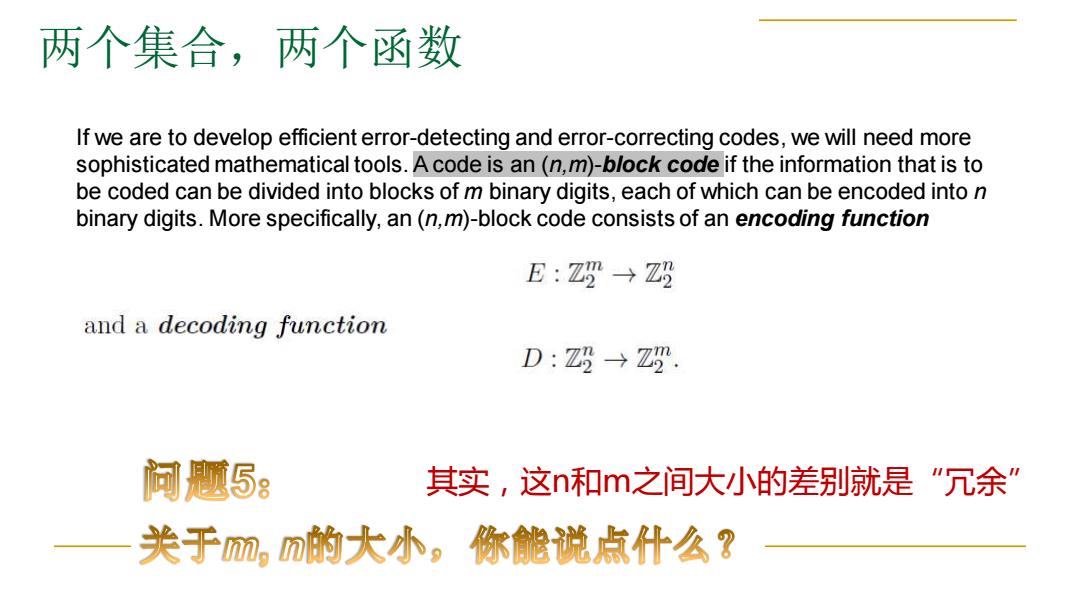
问题2: 要发现收到的报文中的错误,最 straight forward的方法是什么? Example 2.Even parity, Using even parity,the codes for A,B,and C now become A=010000012, B=010000102, C=110000112 Suppose an A is sent and a transmission error in the sixth bit is caused by noise over the communication channel so that (0100 0101)is received

问题2: 要发现甚至纠正收到的报文中的错误, 最“straight forward的方法是什么? 无论是发现,甚至在某种假设下发现及纠正错误,总有 冗余 的存在,必须的吗?
冗余 无论是发现,甚至在某种假设下发现及纠正错误,总有 的存在,必须的吗?

问题3: 我们必须考虑物理信道会出错,但又假设 出错“不多”,这是为什么? We will also assume that a received n-tuple is decoded into a codeword that is closest to it;that is,we assume that the receiver uses maximum-likelihood decoding

问题4.1: 一个编码方案”究竞是什么? 问题4.2 那么,一个好“编码方案”究竟是 好在哪里?

两个集合,两个函数 If we are to develop efficient error-detecting and error-correcting codes,we will need more sophisticated mathematical tools.A code is an(n,m)-block code if the information that is to be coded can be divided into blocks of m binary digits,each of which can be encoded into n binary digits.More specifically,an(n,m)-block code consists of an encoding function E:Z四→Z5 and a decoding function D:Z→Z. 问题58 其实,这n和m之间大小的差别就是“冗余” 关于m,m的大小,你能说点什么?
两个集合,两个函数 其实,这n和m之间大小的差别就是“冗余” If we are to develop efficient error-detecting and error-correcting codes, we will need more sophisticated mathematical tools. A code is an (n,m)-block code if the information that is to be coded can be divided into blocks of m binary digits, each of which can be encoded into n binary digits. More specifically, an (n,m)-block code consists of an encoding function